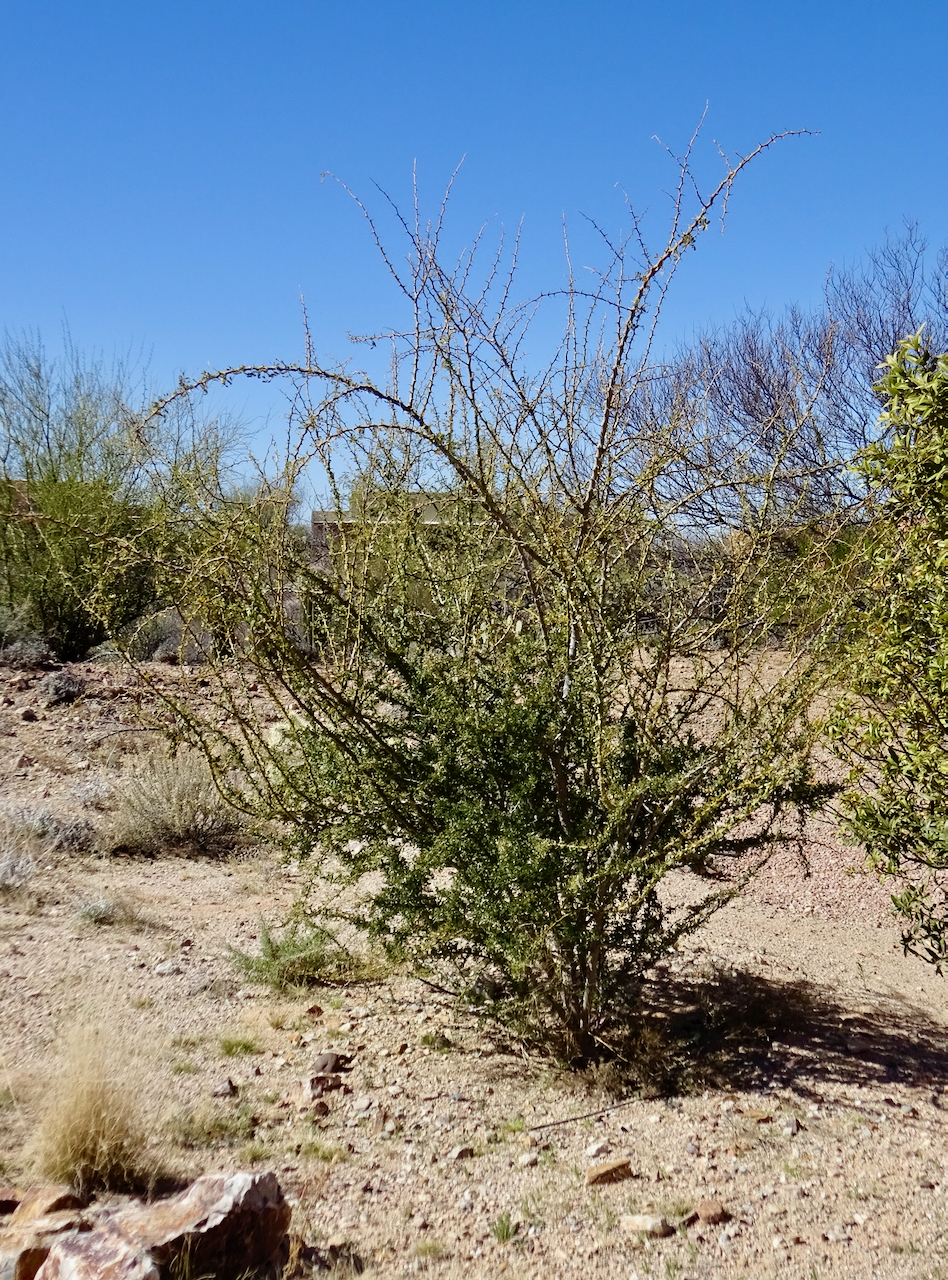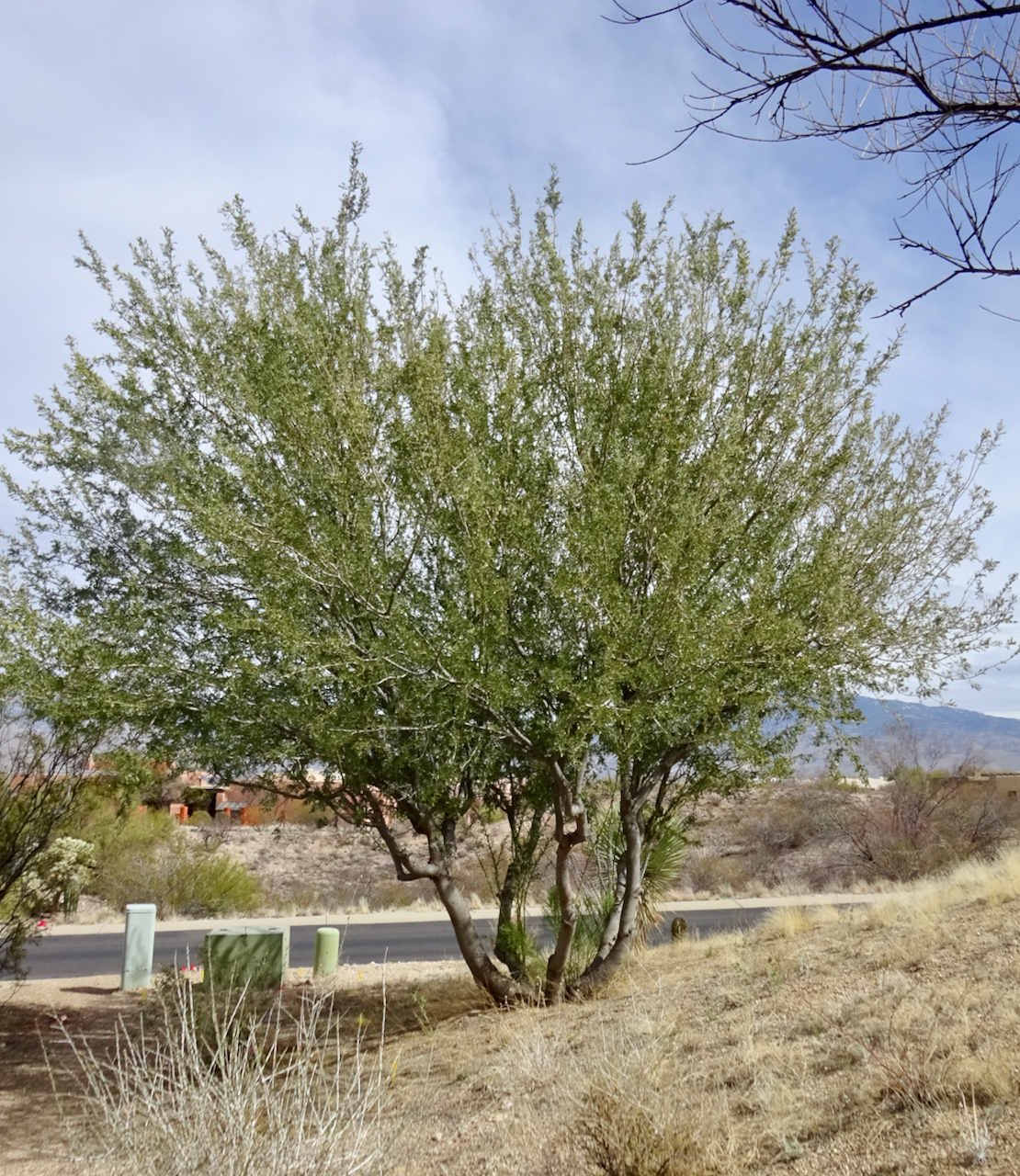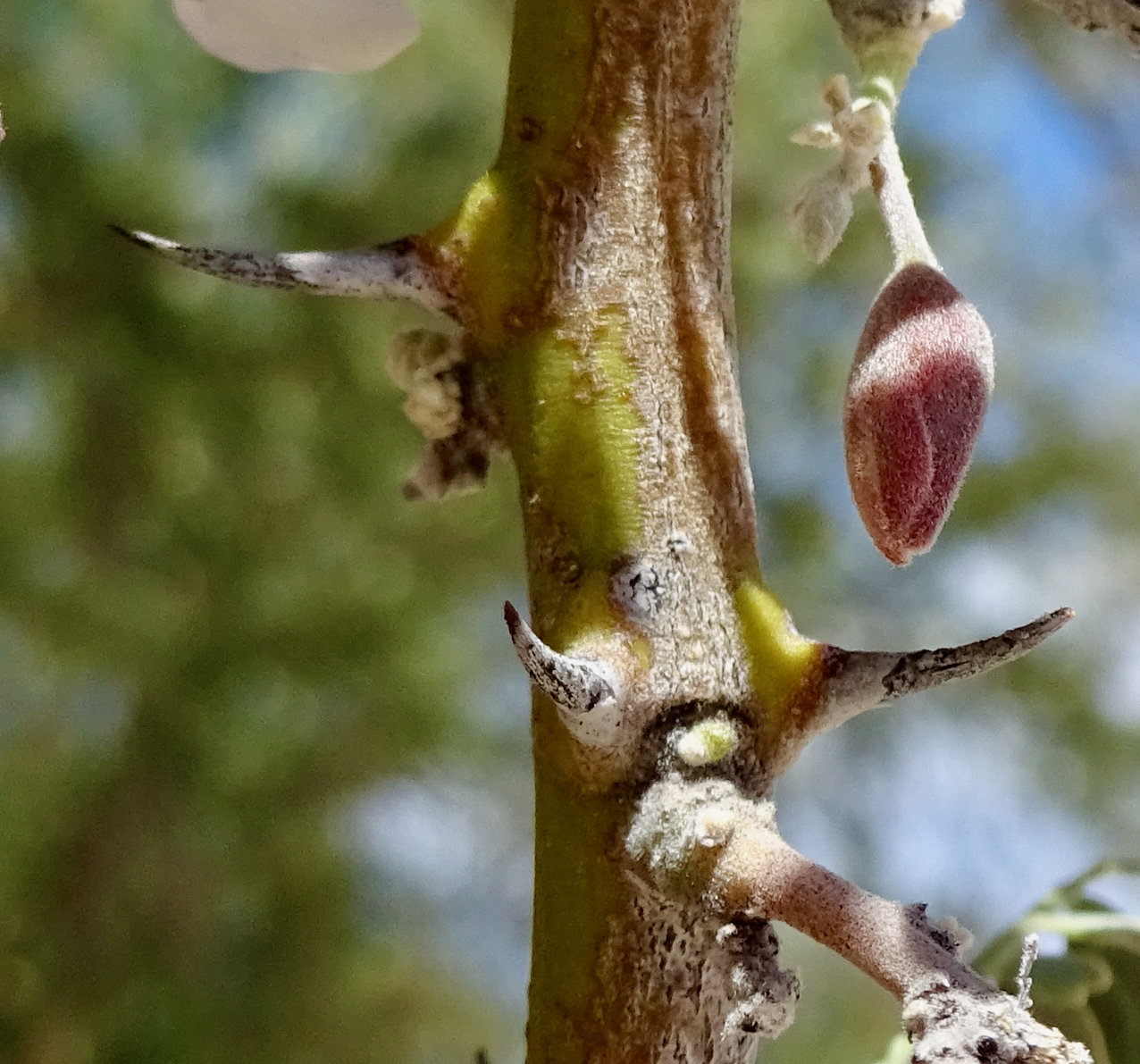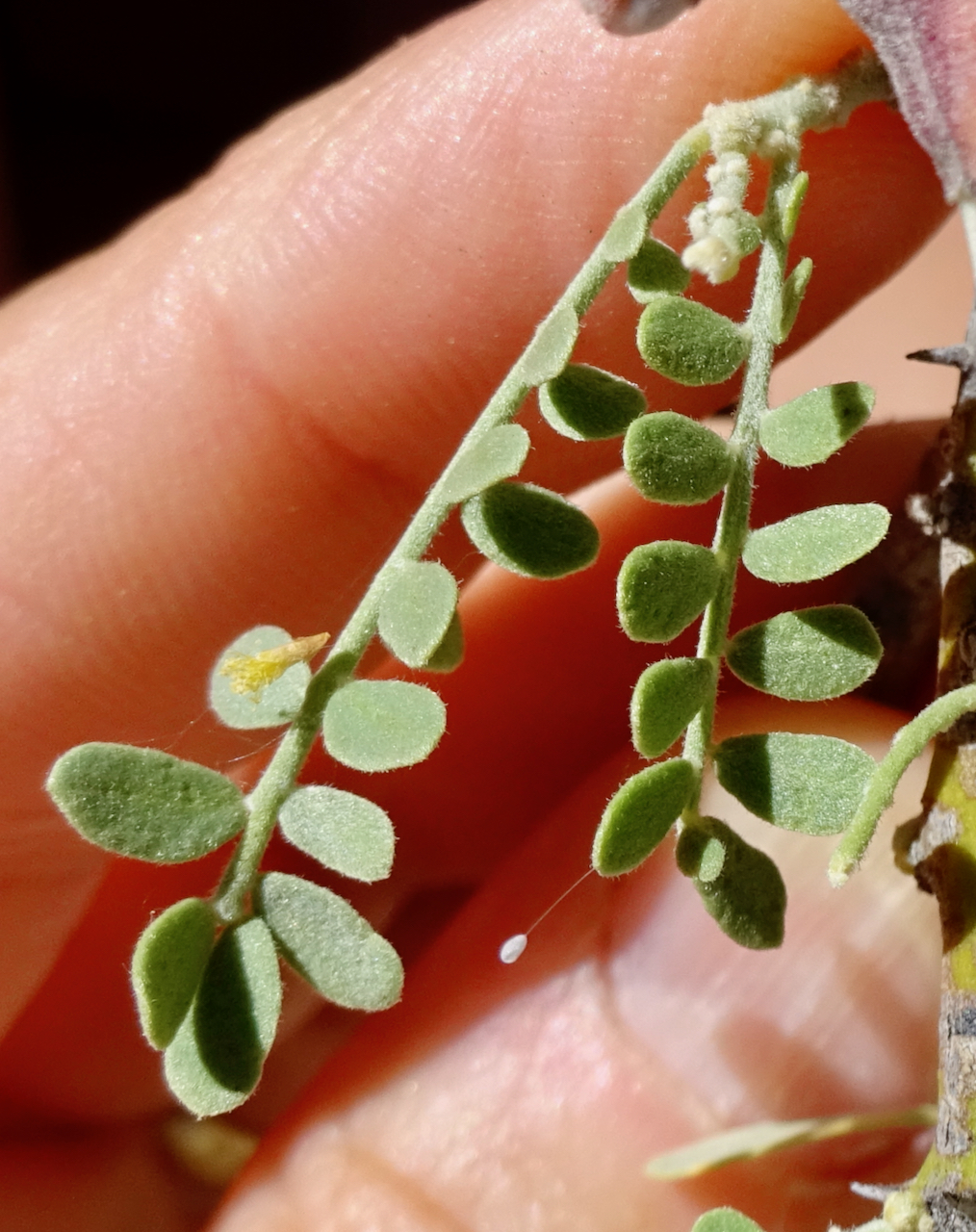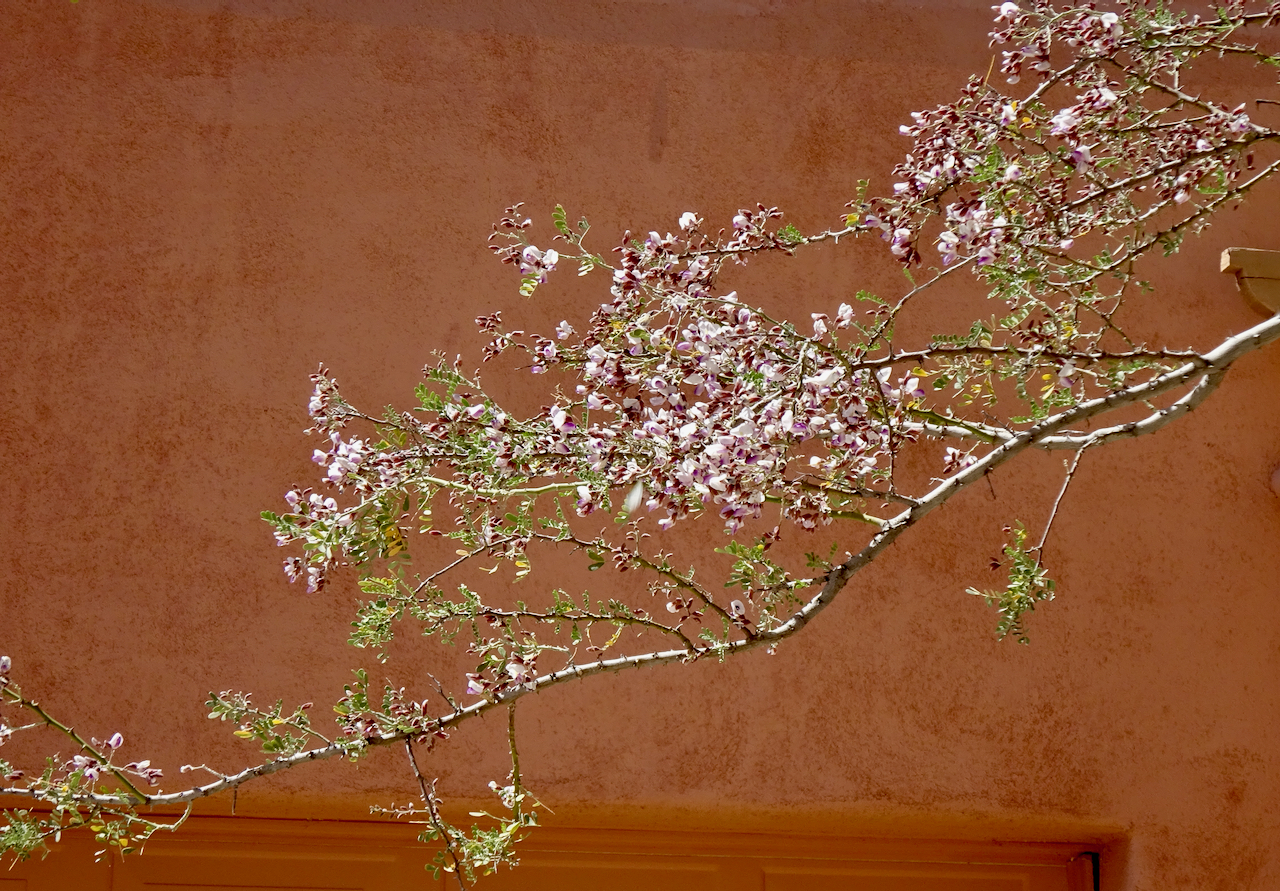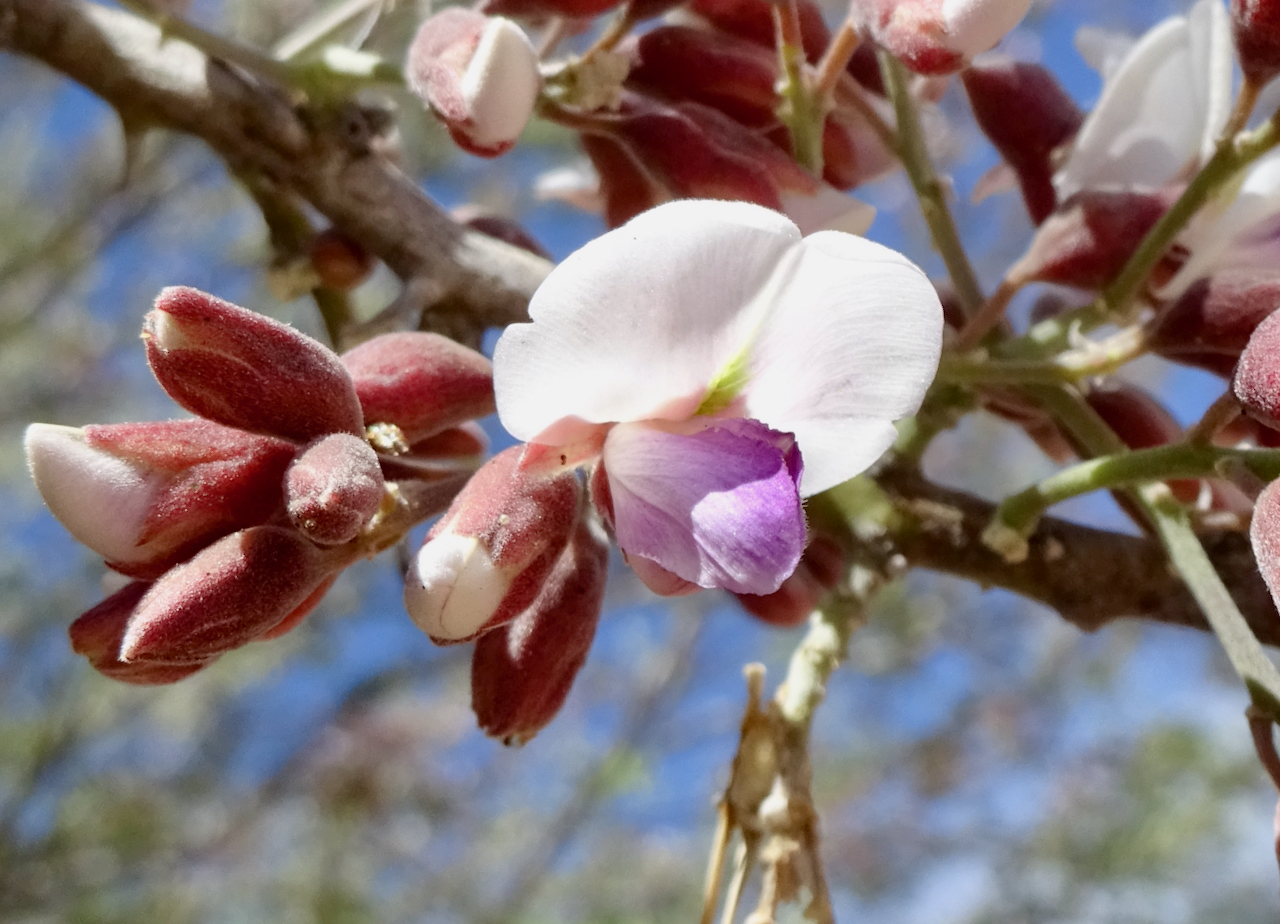Desert Ironwood
Olneya tesota
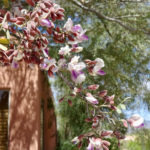
About the Plant
Desert ironwood is one of the largest and longest-lived plants in the Sonoran Desert. The boundaries of its natural distribution match almost exactly those of the Desert, where it grows at the warmer, lower elevations. In the Tucson area it is found in the western mountains and is especially abundant in Ironwood Forest National Monument and Saguaro National Park-West.
Desert ironwood is a slow growing tree that can eventually reach to 30 feet tall and wide. It can tolerate long periods of drought but irrigation in summer can increase its growth rate. This tree should not be planted at higher elevations or in frost pockets, as prolonged freezing can kill it. Branches may be damaged at about 20°F. Attractive purple and white flowers appear on larger trees in May followed by rapidly maturing fruit. Desert ironwood can function as a shade tree. Prune lower branches only in the cool months to avoid sunburn on newly-exposed branches.
Wildlife value:
Desert ironwood is a habitat-modifying keystone species, influencing distribution and abundance of over 500 associated species. It nurtures a wide array of plants under its canopy, provides roosts and nesting sites for birds, and protein-rich leaves and seeds for animals. For a fuller discussion of its important in the Sonoran Desert see Biological Survey of Ironwood Forest National Monument and Ironwood from Sonoran Desert Conservation Plan website.
More Information
Weekly Plant on desert ironwood
Horticultural information from ASU
Technical botanical description from SEINet
In books:
Native Plants for Southwestern Landscapes by Judy Mielke, page 202
